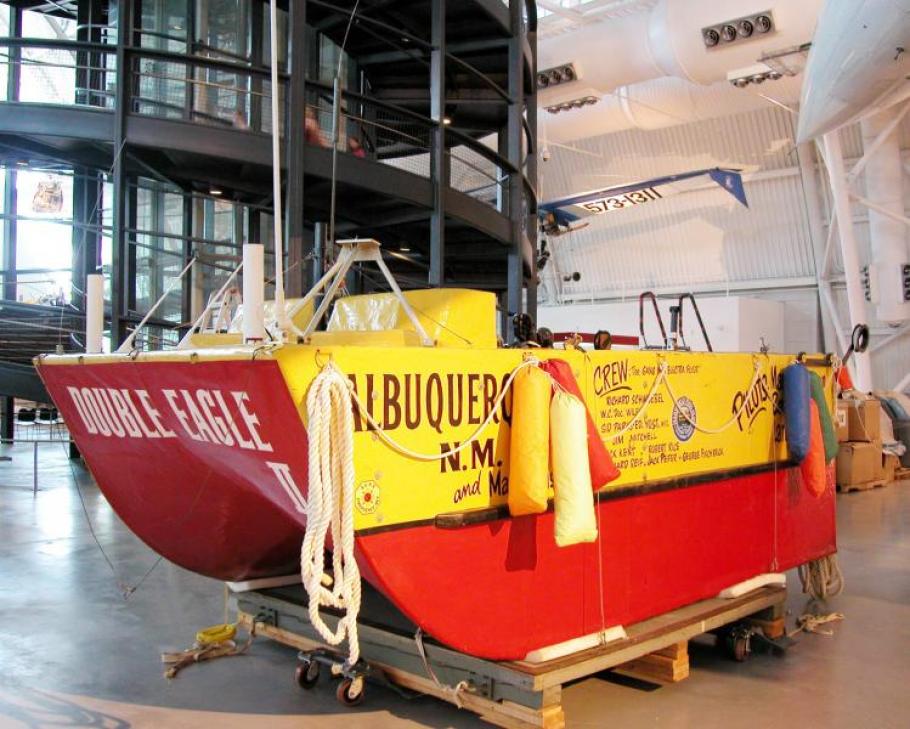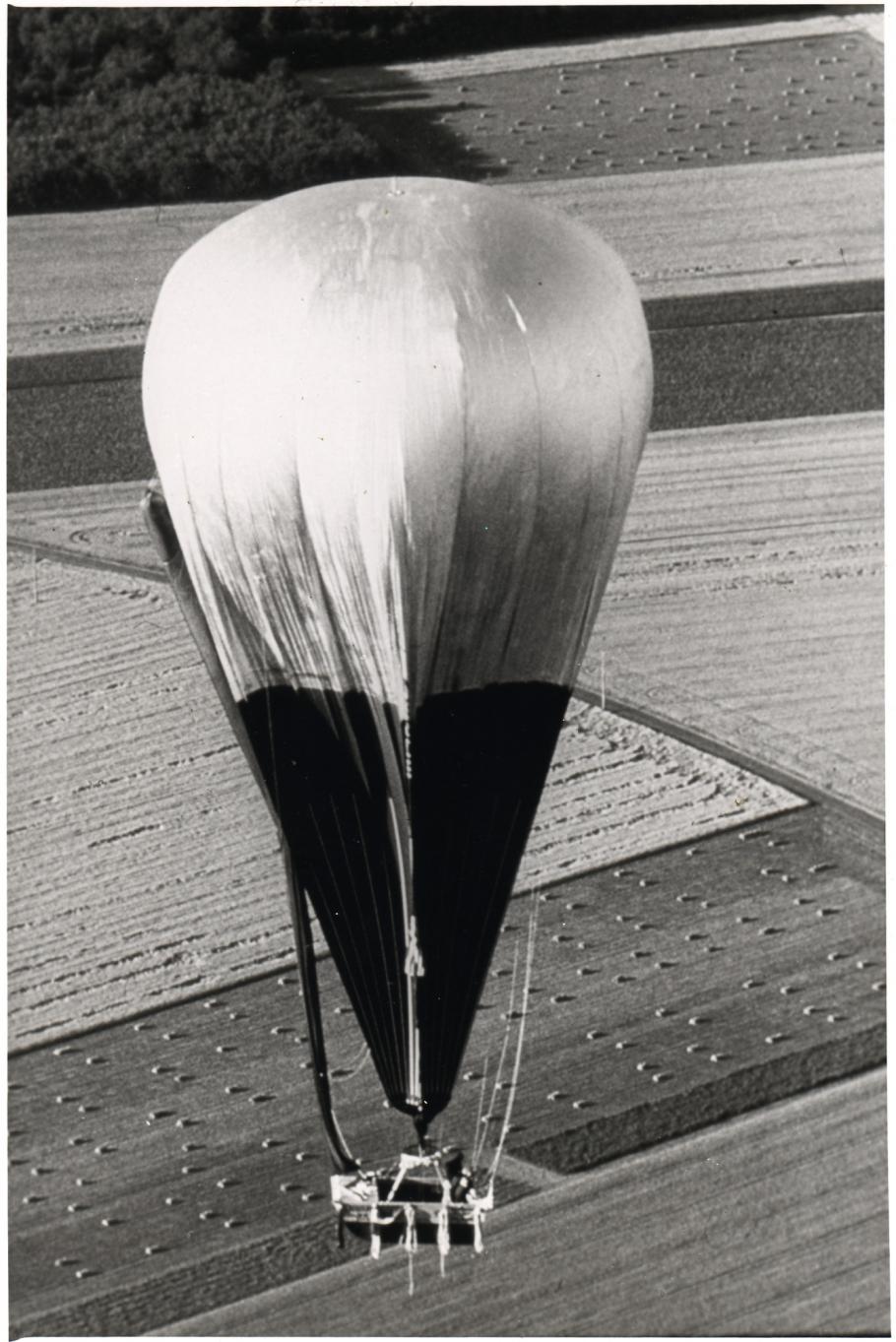The flight of the Double Eagle II balloon came to a safe and successful end in a wheat field near Miserey, France, about 60 miles northwest of Paris, on August 17, 1978. The event closed a chapter in the history of flight that had begun when the first human beings ventured aloft in 1783. At long last, a crew of balloonists had crossed the Atlantic Ocean.
Ben Abruzzo, Maxie Anderson, and Larry Newman, all of Albuquerque, New Mexico, completed the first balloon flight across the Atlantic, flying the 3,100-mile flight from Presque Isle, Maine, to Miserey in 137 hours, 6 minutes. Lift-off had been at 8:42 p m on August 11. Their helium-filled balloon, the Double Eagle II, was 112 feet high, 65 feet in diameter, and had a capacity of 160,000 cubic feet. Abruzzo, Anderson, and Newman rode in a 15 x 7 x 4 1/2-foot gondola named The Spirit of Albuquerque, equipped with a twin-hulled catamaran that would float in case of an emergency water landing. Also carried along by Newman, a hang-glider pilot and owner of a hang-glider manufacturing company, was a glider which was attached to the gondola with the idea of using it for the descent at the end of the flight. It had to be cast off to lighten the balloon, however, before the crew reached their goal.
Display Status
This object is on display in Ultralight Aircraft at the Steven F. Udvar-Hazy Center in Chantilly, VA.
Object Details
Country of Origin
United States of America
Type
CRAFT-Balloon
Physical Description
Yellow and red with black lettering.
Dimensions
Overall: 180 x 84 x 60in., 1610lb. (457.2 x 213.36 x 152.4cm, 730.3kg)
Inventory Number
A19790532000
Data Source
National Air and Space Museum
Restrictions & Rights
Usage conditions apply
For more information, visit the Smithsonians Terms of Use.




